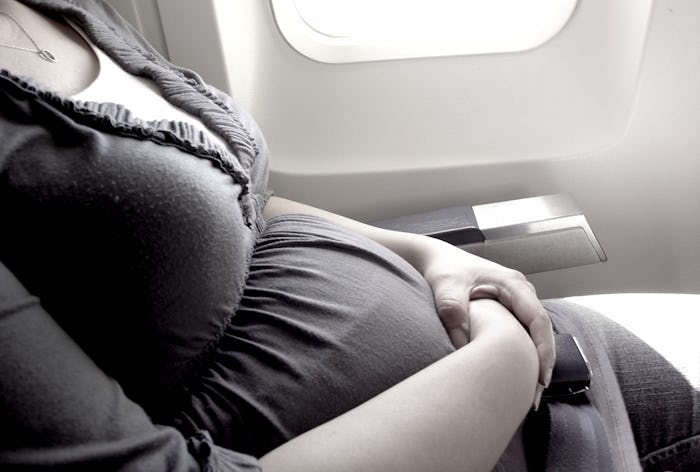Life
Is It Safe To Fly While Pregnant? 7 Things To Know About Traveling As A Mom-To-Be
They say flying is tough with a baby in tow, but what about those nine plus months a baby is chilling inside of your body? You’re uncomfortable, your body has stretched into a shape you couldn’t even fathom, and you’re not even sure if it is safe to fly while pregnant.
I get it. Travel is stressful enough without worrying that you’re going to put your baby, or yourself, in harm’s way. But flying doesn’t have to add to the stress. The Mayo Clinic noted on that, for most healthy, low-risk pregnancies, a woman can fly until she’s 36 weeks along. After that, the chances of going into labor are too high for your health care provider to give you permission to board a plane. Your doctor may also have reservations about certain trips, so seeking out their expertise on the matter and asking them if they think it’s safe for an eight hour flight to London is important.
You can also breathe a sigh of relief that the TSA’s medical detectors do not use X-rays to scan the body and have been approved by the FDA as safe for pregnant women to walk through. There have also been concerns over in-flight radiation exposure causing problems for pregnant passengers, but an article in the National Center for Biotechnology Information stated that, for casual travelers, “the impact on pregnancy from cosmic radiation exposure during flight is trivial.” For more frequent travelers, and airline employees like pilots and flight attendants, work schedules or travel times may have to be altered to stay under the limit for radiation exposure.
Let’s be honest, the biggest issues you might find while flying during your pregnancy is trying to comfortably strap a seat belt around your baby bump and being hungry at 39,000 feet with nothing to eat but a bag of peanuts to fill the void. These seven tips can help you travel safely as a mom-to-be and keep the stress of flying at bay.
1Check The Airline Policies
Just because your doctor says you can fly at 30 weeks doesn’t mean the airline agrees. Each airline has a policy on their pregnant passengers, so do your research to save yourself some time and stress.
2Ask For Help With Your Bags
The American Pregnancy Association notes that lifting heavy objects during pregnancy is a big no-no, so make sure to ask for help when hoisting your suitcases to be weighed or lifting your bags for security. You should also use a cart when retrieving your luggage and ask for someone to grab your bag off the belt.
3Request A Pat-Down
Although the TSA is adamant that their machines are safe for you to walk through, the organization notes that you can request a pat-down. A female TSA officer will assist you and properly screen you for your flight without making you head through the metal detectors.
4Choose A Comfortable Seat
This could mean something different for everyone. If you want to sit near the bathroom, choose a seat that makes that trek easy. You might prefer to sit up front with the extra leg room or an aisle seat rather than a window seat so you don’t have to clamber over anyone. (Because nothing says “How you doin’?” like straddling a strange who’s trying to enjoy their in-flight movie in peace.)
5Stay Hydrated
This can not be stressed enough! According to Everyday Health, the low humidity levels in the cabin can leave you feeling dehydrated, so keep up your fluid intake. It’s already recommended that pregnant women have 64 ounces of fluid a day and being in flight makes that even more important.
6Pack Snacks
Nobody wants a hungry pregnant lady around, especially if she’s stuck in an airplane with them. Pack plenty of snacks for your trip and try to avoid foods high in salt so you can keep yourself as hydrated as possible.
7Move Around
The American Congress of Obstetricians and Gynecologists noted on their website that one of the most common fears in air travel for pregnant women is experiencing venous thrombosis, a deep blood clot that usually affects the large veins in the lower leg and thigh and can be extremely dangerous. To minimize your risk, you should make sure to move around and keep the circulation flowing. Take a few laps around the cabin and stretch often. If you’re going on a particularly long flight, talk to your doctor about the best way to minimize your risk. They might suggest purchasing compression stockings or support hose to keep the clots away.
